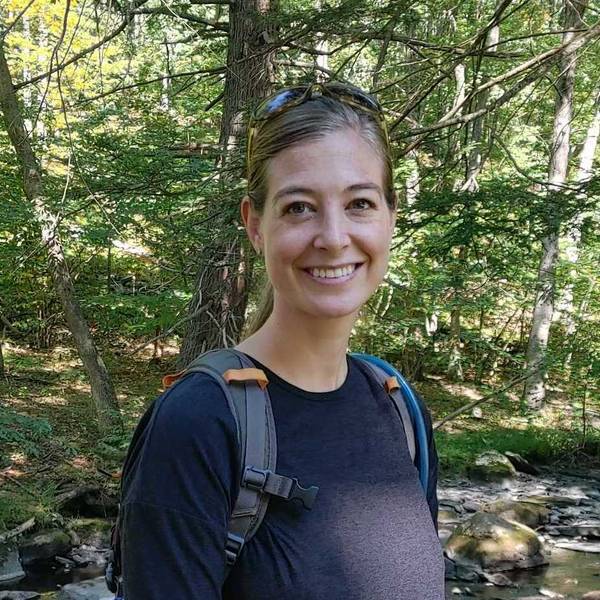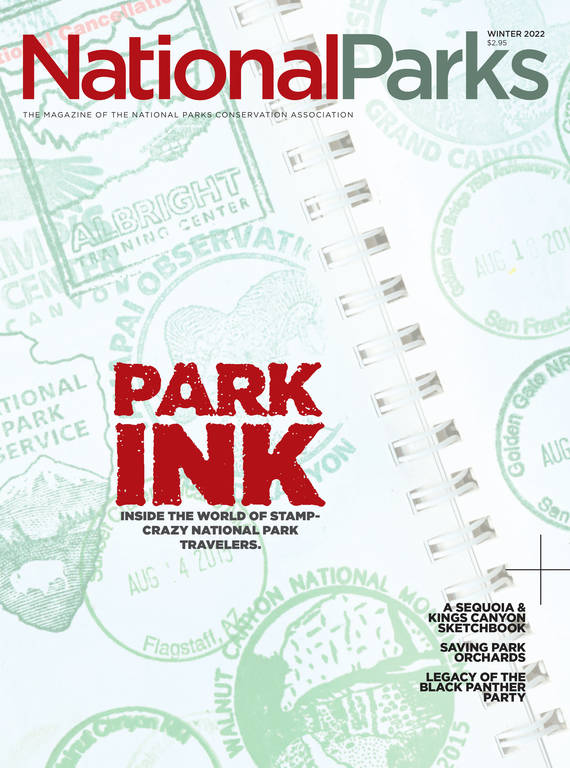Winter 2022
Angling for Cash
Glen Canyon National Recreation Area tries a novel approach to control brown trout.
The pay-to-play mentality has been flipped on its head along a 15.5-mile stretch of the Colorado River south of Glen Canyon Dam in Arizona. Rather than forking over money for the pleasure of hooking a fish, anglers in this sun-doused portion of Glen Canyon National Recreation Area are paid at least $25 for every brown trout they catch.
All participants must be over 10 years old and own a current Arizona fishing license, but otherwise the rules are pretty simple: Reel in a brown over 6 inches in length and deposit the head and guts — along with a data card — into a secure freezer at the Navajo Bridge Interpretive Center. Each month, Glen Canyon staff members check the box and tally the fish. Then, their partners at Glen Canyon Conservancy remit payments to the anglers.
The incentive varies seasonally. If it’s hot and fewer people are out, for example, the price per fish might increase. This fall, the pot was particularly sweet, with an additional $300 offered for any brown trout caught with a Passive Integrated Transponder tag (a small tracking device used by researchers to garner information about the fish population). In its first year, the program, which began last November, meted out over $20,000 for the harvest of more than 500 fish.
Distinguished by a wheat-colored belly and blue-limned bronze dots, brown trout are a nonnative fish most likely introduced into a tributary of the river in the 1920s. In recent years, they’ve become troublingly abundant due to multiple factors, including a wealth of food. The piscivorous browns, which can tip the scales at 30 pounds or more, compete with — and feed on — rainbow trout, itself an introduced species but one that is less predatory and is prized for sustaining Glen Canyon’s recreational fishery. Browns could also migrate downstream, jeopardizing the survival of threatened species, such as Grand Canyon National Park’s humpback chub.
To control brown trout numbers, Glen Canyon staff considered several methods, including electrofishing (stunning fish with an electric pulse), disrupting spawning beds and using chemicals, but they opted to give incentivized harvest a shot before trying one of the more heavy-handed tactics, said Ken Hyde, the park’s chief of science and resource management. Ultimately, the fishing program, which aims to reduce the brown trout population — not eliminate it entirely — “made sense to everyone,” the longtime Park Service employee said. “It’s really our attempt to let anglers be one of the management tools out on the land.”

National Parks
You can read this and other stories about history, nature, culture, art, conservation, travel, science and more in National Parks magazine. Your tax-deductible membership donation of $25 or more entitles…
See more ›Matt Wheeler, a repeat beneficiary of the program, has no complaints. The 27-year-old project manager from Tuba City, Arizona, had never fished this portion of the Colorado River until a homeowner on one of his construction sites told him about the get-paid-to-fish opportunity. “At first I didn’t believe him,” Wheeler said. After hitting the river for the inaugural weekend, he has returned dozens of times since, pulling in every fish he can, including several 20-inchers. Not only is his hobby lucrative, but the browns are “pretty good eating,” he said.
Hyde concedes that the program isn’t yet as popular as the Park Service had hoped. “We would love to have about 200 fish turned in every month,” he said. That would be roughly four times what they’ve been seeing. But he remains optimistic. “It’s a great recreational opportunity in a gorgeous canyon,” Hyde said. “So, we’re giving it our best shot.”
About the author
-
 Katherine DeGroff Associate and Online Editor
Katherine DeGroff Associate and Online EditorKatherine is the associate editor of National Parks magazine. Before joining NPCA, Katherine monitored easements at land trusts in Virginia and New Mexico, encouraged bear-aware behavior at Grand Teton National Park, and served as a naturalist for a small environmental education organization in the heart of the Colorado Rockies.



